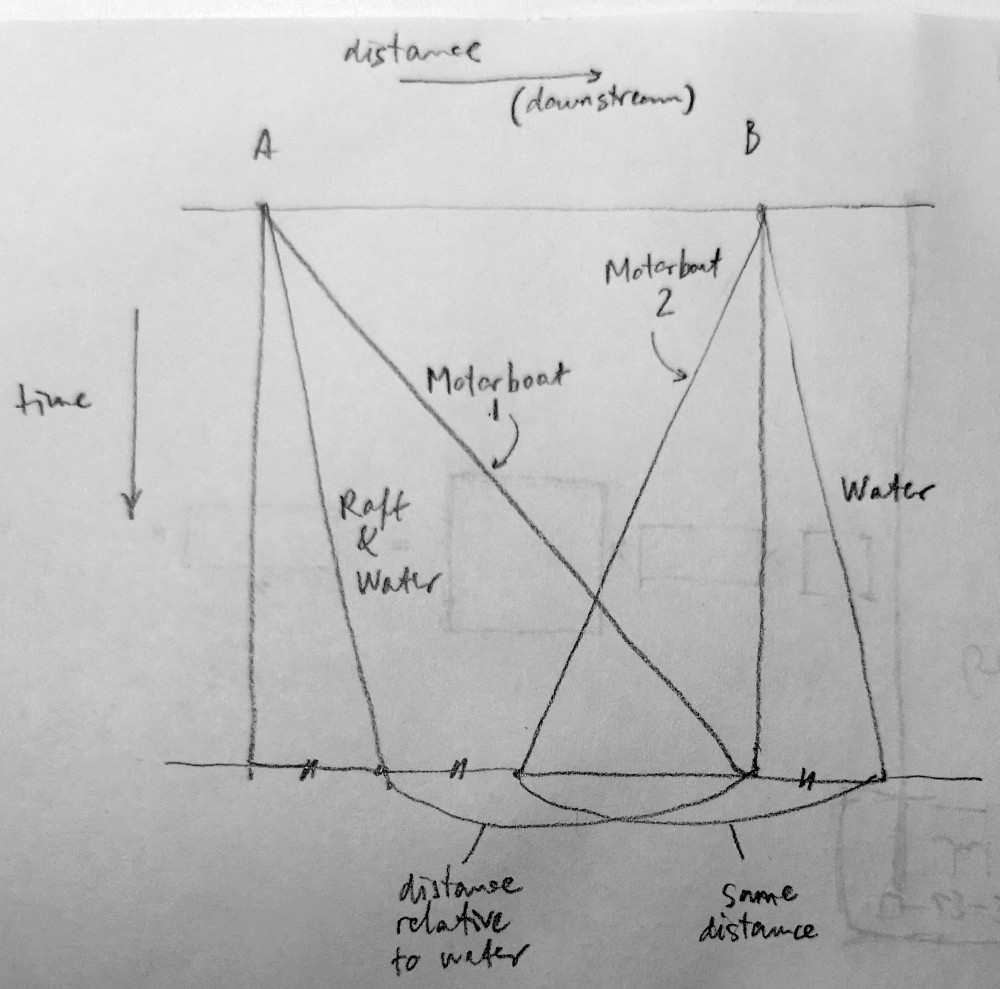A problem by G. Galperin, from the May-June 1995 issue of Quantum:
A raft and a motorboat depart simultaneously from Point A on a riverbank and begin drifting and speeding downstream, respectively, toward Point B. At the same moment, a second motorboat, of the same type as the first, sets out from Point B heading upstream. When the first motorboat reaches B, will the floating raft be closer to Point A or to the second motorboat?
|
SelectClick for Answer |
This intuitive solution is by V. Dubrovsky. Imagine a third point, C, that’s as far upstream from A as A is from B (so CA = AB). And imagine a third motorboat that parallels the movements of the first, setting out from point C and heading downstream at the same time. The third and second motorboats are equidistant from the raft when they begin their journeys, and both move at the same speed relative to the raft (and to the surface of the water). So they’ll remain equidistant from the raft as they progress toward it. When the first motorboat reaches B, the third will reach A. At that moment the raft will be the same distance from the second motorboat and from Point A (now occupied by the third motorboat). That’s the answer.
07/20/2025 UPDATE: From reader Catalin D. Voinescu:

Even simpler, from reader Joe McVeety: “Since you are not given the speed of the river, it must not matter. Therefore, set it to 0. The raft never moves. Boats 1 and 2, traveling at the same speed, will cover the same distance in the same time. When Boat 1 reaches B, Boat 2 is reaching A. The raft never moved, so it is equidistant to Boat 2 and Point A. 0, in this case.”
|

